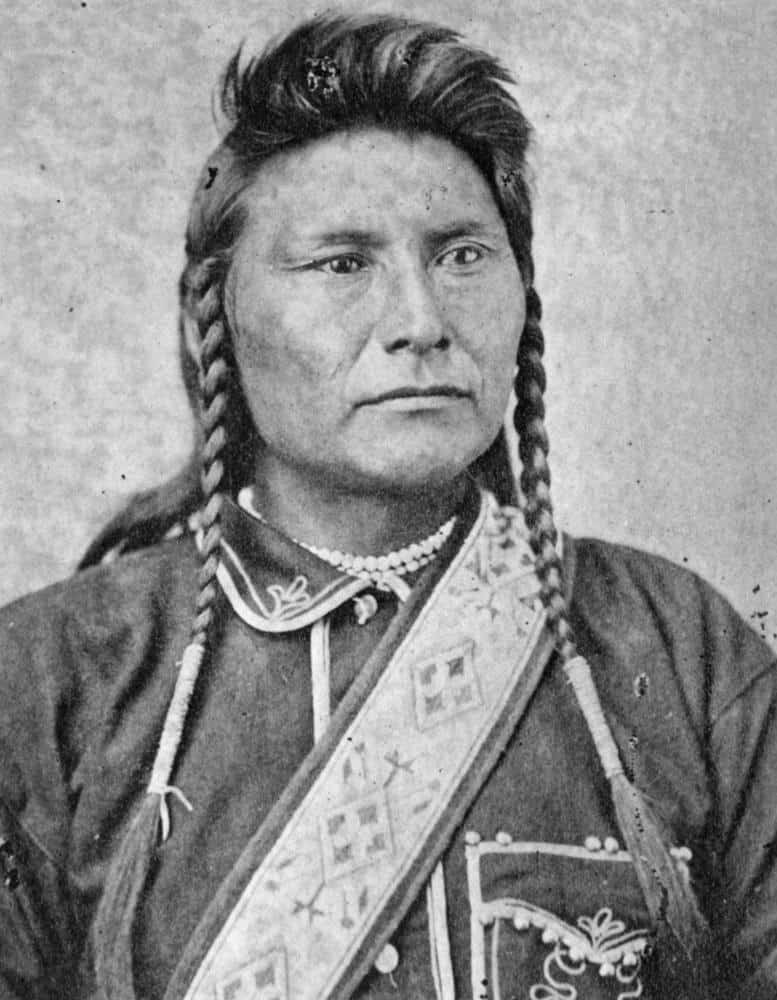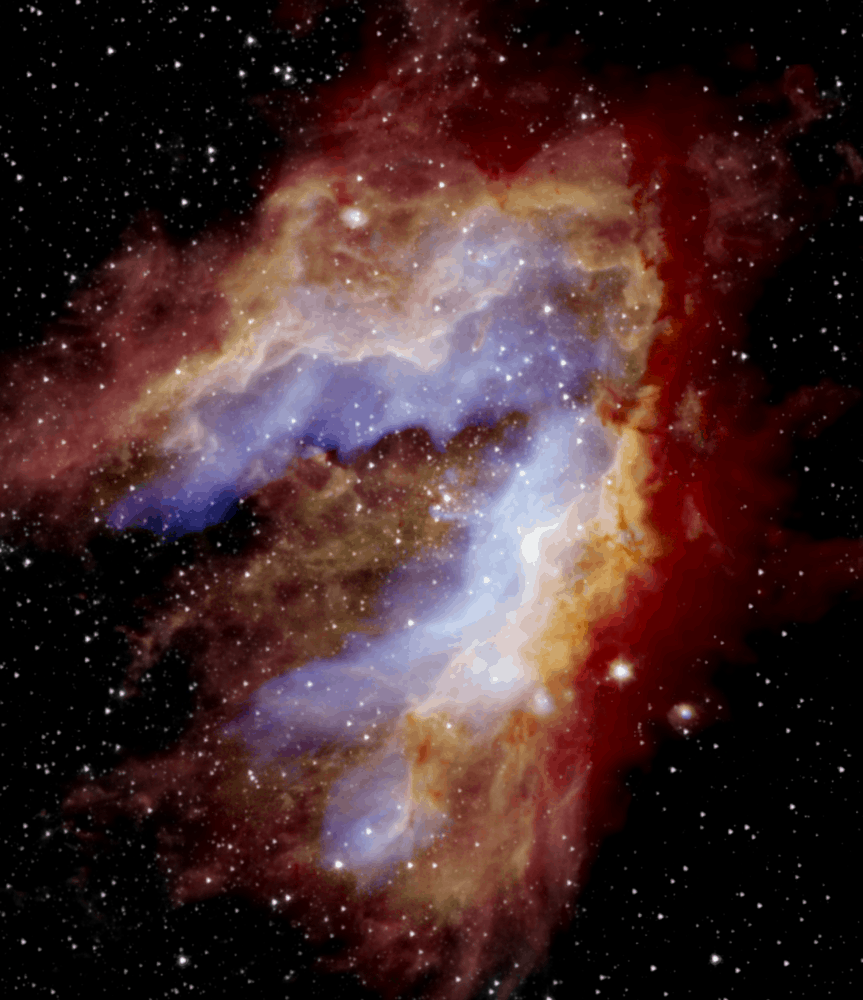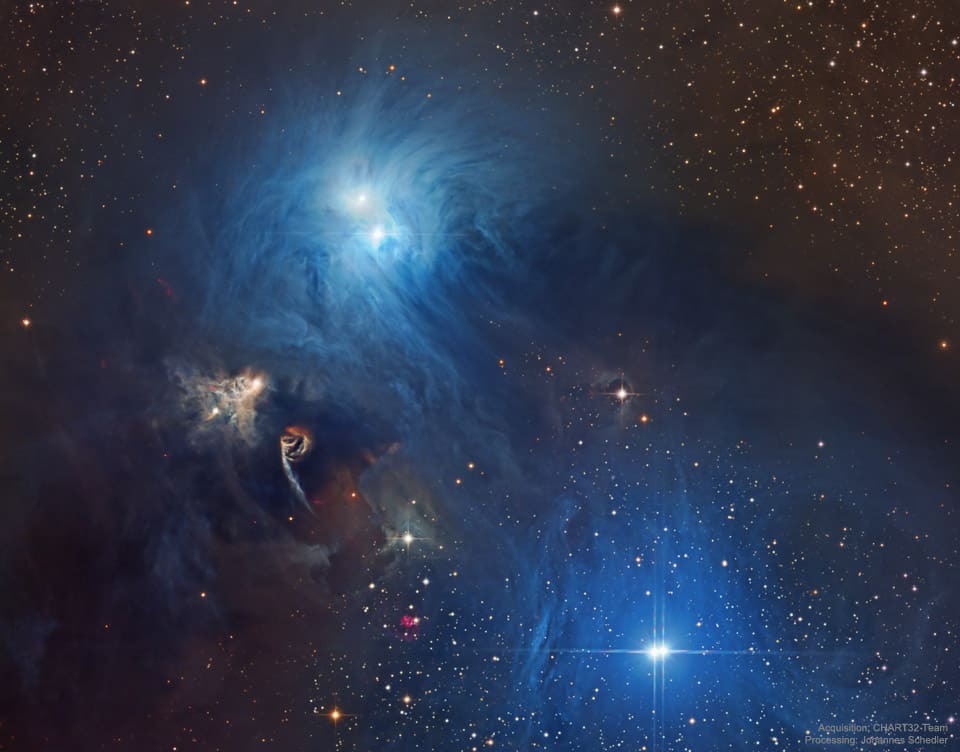Blog
Orion’s Sword is a compact asterism in the constellation Orion. It comprises three stars (42 Orionis, Theta Orionis, and Iota Orionis) and M42, the Orion Nebula, which together are thought to resemble a sword or its scabbard. This group is south of the prominent asterism, Orion’s Belt. Fables and old beliefs are in Europe dominated or widely influenced by those of the Greco-Roman narratives. Beyond Europe this grouping is quite widely referenced as a weapon just as the majority of cultures perceived Orion’s standout asymmetrical “hourglass” of seven very bright stars as a human.

Allen Toussaint (/ˈtuːsɑːnt/; January 14, 1938 – November 10, 2015) was an American musician, songwriter, arranger and record producer, who was an influential figure in New Orleans rhythm and blues from the 1950s to the end of the century, described as “one of popular music’s great backroom figures”. Many musicians recorded Toussaint’s compositions, including “Whipped Cream”, “Java“, “Mother-in-Law“, “I Like It Like That“, “Fortune Teller“, “Ride Your Pony“, “Get Out of My Life, Woman“, “Working in the Coal Mine“, “Everything I Do Gonna Be Funky”, “Here Come the Girls“, “Yes We Can Can“, “Play Something Sweet“, and “Southern Nights“. He was a producer for hundreds of recordings, among the best known of which are “Right Place, Wrong Time“, by his longtime friend Dr. John (“Mac” Rebennack), and “Lady Marmalade“, by Labelle.
The youngest of three children, Toussaint was born in 1938 in New Orleans and grew up in a shotgun house in the Gert Town neighborhood, where his mother, Naomi Neville (whose name he later adopted pseudonymously for some of his works), welcomed and fed all manner of musicians as they practiced and recorded with her son. His father, Clarence, worked on the railway and played trumpet. Allen Toussaint learned piano as a child and took informal music lessons from an elderly neighbor, Ernest Pinn. In his teens he played in a band, the Flamingos, with the guitarist Snooks Eaglin, before dropping out of school. A significant early influence on Toussaint was the syncopated “second-line” piano style of Professor Longhair.
After a lucky break at age 17, in which he stood in for Huey “Piano” Smith at a performance with Earl King‘s band in Prichard, Alabama, Toussaint was introduced to a group of local musicians led by Dave Bartholomew, who performed regularly at the Dew Drop Inn, a nightclub on Lasalle Street in Uptown New Orleans. His first recording was in 1957 as a stand-in for Fats Domino on Domino’s record “I Want You to Know“, on which Toussaint played piano and Domino overdubbed his vocals. His first success as a producer also came in 1957 with Lee Allen’s “Walking with Mr. Lee”. He began performing regularly in Bartholomew’s band, and he recorded with Fats Domino, Smiley Lewis, Lee Allen and other leading New Orleans performers.
more...Grady Bernard Tate (January 14, 1932 – October 8, 2017) was an American jazz and soul-jazz drummer and baritone vocalist. In addition to his work as sideman, Tate released many albums as leader and lent his voice to songs in the animated Schoolhouse Rock! series. Tate was born in Hayti, Durham, North Carolina. In 1963 he moved to New York City, where he became the drummer in Quincy Jones‘s band.
Grady Tate’s drumming helped to define a particular hard bop, soul jazz and organ trio sound during the mid-1960s and beyond. His slick, layered and intense sound is instantly recognizable for its understated style in which he integrates his trademark subtle nuances with sharp, crisp “on top of the beat” timing (in comparison to playing slightly before, or slightly after the beat). The Grady Tate sound can be heard prominently on many of the classic Jimmy Smith and Wes Montgomery albums recorded on the Verve label in the 1960s. During the 1970s he was a member of the New York Jazz Quartet. In 1981 he played drums and percussion for Simon and Garfunkel’s Concert in Central Park. As a sideman he has played with musicians including Jimmy Smith, Astrud Gilberto, Ella Fitzgerald, Duke Ellington, Count Basie, Rahsaan Roland Kirk, Quincy Jones, Stan Getz, Wes Montgomery, and Michel Legrand.
https://www.youtube.com/watch?v=eGA-BQpx5Bo
more...Kenneth Vincent John Wheeler, OC (14 January 1930 – 18 September 2014) was a Canadian composer and trumpet and flugelhorn player, based in the U.K. from the 1950s onwards. Most of his performances were rooted in jazz, but he was also active in free improvisation and occasionally contributed to rock music recordings. Wheeler wrote over one hundred compositions and was a skilled arranger for small groups and large ensembles. Wheeler was the patron of the Royal Academy Junior Jazz course.
Wheeler was born in Toronto, Ontario, on 14 January 1930. Growing up in Toronto, he began playing cornet at age 12, and became interested in jazz in his mid-teens. Wheeler spent a year studying composition at The Royal Conservatory of Music in 1950. In 1952 he moved to Britain. He found his way into the London jazz scene of the time, playing in groups led by Tommy Whittle, Tubby Hayes, and Ronnie Scott.
https://www.youtube.com/watch?v=0t0_heBtX1s
more...“Let me be a free man, free to travel, free to stop, free to work, free to trade where I choose, free to choose my own teachers, free to follow the religion of my fathers, free to talk, think and act for myself — and I will obey every law or submit to the penalty.” Chief Joseph of the Nez Perce

One of the brightest and most massive star-forming regions in our galaxy, the Omega or Swan Nebula, came to resemble the shape resembling a swan’s neck we see today only relatively recently. New observations reveal that its regions formed separately over multiple eras of star birth. The new image from the Stratospheric Observatory for Infrared Astronomy, or SOFIA, is helping scientists chronicle the history and evolution of this well-studied nebula.
“The present-day nebula holds the secrets that reveal its past; we just need to be able to uncover them,” said Wanggi Lim, a Universities Space Research Association scientist at the SOFIA Science Center at NASA’s Ames Research Center in California’s Silicon Valley. “SOFIA lets us do this, so we can understand why the nebula looks the way it does today.”
Uncovering the nebula’s secrets is no simple task. It’s located more than 5,000 light years away in the constellation Sagittarius. Its center is filled with more than 100 of the galaxy’s most massive young stars. These stars may be many times the size of our Sun, but the youngest generations are forming deep in cocoons of dust and gas, where they are very difficult to see, even with space telescopes. Because the central region glows very brightly, the detectors on space telescopes were saturated at the wavelengths SOFIA studied, similar to an over-exposed photo. SOFIA’s infrared camera called FORCAST, the Faint Object Infrared Camera for the SOFIA Telescope, however, can pierce through these cocoons.
The new view reveals nine protostars, areas where the nebula’s clouds are collapsing and creating the first step in the birth of stars, that had not been seen before. Additionally, the team calculated the ages of the nebula’s different regions. They found that portions of the swan-like shape were not all created at the same time but took shape over multiple eras of star formation.
The central region is the oldest, most evolved and likely formed first. Next, the northern area formed, while the southern region is the youngest. Even though the northern area is older than the southern region, the radiation and stellar winds from previous generations of stars has disturbed the material there — preventing it from collapsing to form the next generation.

Melba Doretta Liston (January 13, 1926 – April 23, 1999) was an American jazz trombonist, arranger, and composer. She was the first woman trombonist to play in big bands during the 1940s and 1960s, but as her career progressed she became better known as an arranger particularly in partnership with pianist Randy Weston.
Liston was born in Kansas City, Missouri. At the age of seven, Melba’s mother purchased her a trombone. Her family encouraged her musical pursuits, as they were all music lovers. Liston was primarily self-taught, but she was “encouraged by her guitar-playing grandfather” who she spent significant time with learning to play spirituals and folk songs. At the age of eight, she was good enough to be a solo act on a local radio station. At the age of ten, she moved to Los Angeles, California. She was classmates with Dexter Gordon, and friends with Eric Dolphy. After playing in youth bands and studying with Alma Hightower, she joined the big band led by Gerald Wilson in 1944.
She recorded with saxophonist Dexter Gordon in 1947 and joined Dizzy Gillespie‘s big band, which included saxophonists John Coltrane, Paul Gonsalves, and pianist John Lewis) in New York for a time when Wilson disbanded his orchestra in 1948. Liston performed in a supporting role and was nervous when asked to take solos, but with encouragement she became more comfortable as a featured voice in bands. She toured with Count Basie, then with Billie Holiday (1949) but was so profoundly affected by the indifference of the audiences and the rigors of the road that she gave up playing and turned to education. Liston taught for about three years.
more...Joe Pass (born Joseph Anthony Jacobi Passalaqua; January 13, 1929 – May 23, 1994) was an American jazz guitarist of Sicilian descent. He is considered one of the greatest jazz guitarists of the 20th century. He created possibilities for jazz guitar through his style of chord-melody, his knowledge of chord inversions and progressions, and his use of walking basslines and counterpoint during improvisation. Pass worked often with pianist Oscar Peterson and vocalist Ella Fitzgerald.
Born in New Brunswick, New Jersey, Joe Pass was the son of Mariano Passalaqua, a Sicilian-born steel mill worker. He was raised in Johnstown, Pennsylvania. He received his first guitar, a Harmony, on his ninth birthday. His father recognized early that his son had “a little something happening” and pushed him to learn tunes by ear, practice scales, play pieces written for other instruments, and to fill in the space between the notes of the melody.
As early as 14, Pass started getting jobs performing. He played with bands led by Tony Pastor and Charlie Barnet, honing his guitar skills while learning about the music business. He began traveling with small jazz groups and moved from Pennsylvania to New York City. Within a few years he had developed an addiction to heroin, and spent much of the 1950s in prison. He eventually recovered after a two-and-a-half-year stay in the Synanon rehabilitation program. During that time he “didn’t do a lot of playing”. In 1962 he recorded Sounds of Synanon. Around this time he received his trademark Gibson ES-175 guitar as a gift, which he used on tours and records for many years.
more...Daniel Moses Barker (January 13, 1909 – March 13, 1994) was an American jazz musician, vocalist, and author from New Orleans. He was a rhythm guitarist for various bands of the day, including Cab Calloway, Lucky Millinder and Benny Carter throughout the 1930s.
One of Barker’s earliest teachers in New Orleans was fellow banjoist Emanuel Sayles, with whom he recorded. Throughout his career, he played with Jelly Roll Morton, Baby Dodds, James P. Johnson, Sidney Bechet, Mezz Mezzrow, and Red Allen. He also toured and recorded with his wife, singer Blue Lu Barker. From the 1960s, Barker’s work with the Fairview Baptist Church Brass Band was pivotal in ensuring the longevity of jazz in New Orleans, producing generations of new talent, including Wynton and Branford Marsalis who played in the band as youths.
Danny Barker was born to a family of musicians in New Orleans in 1909, the grandson of bandleader Isidore Barbarin and nephew of drummers Paul Barbarin and Louis Barbarin. He took up clarinet and drums before switching to a ukulele that his aunt got him, and then a banjo from his uncle or a trumpeter named Lee Collins.
Barker began his career as a musician in his youth with his streetband the Boozan Kings, and also toured Mississippi with Little Brother Montgomery. In 1930 he moved to New York City and switched to the guitar. On the day of his arrival in New York, his uncle Paul took him to the Rhythm Club, where he saw an inspiring performance by McKinney’s Cotton Pickers. It was their first performance in New York as a band.
Barker played with several acts when he moved to New York, including Fess Williams, Billy Fowler and the White Brothers. He worked with Buddy Harris in 1933, Albert Nicholas in 1935, Lucky Millinder from 1937 to 1938, and Benny Carter in 1938. During his time in New York, he frequently played with West Indian musicians, who often mistook him for one of them due to his Creole style of playing.
more...https://www.youtube.com/watch?v=xkv29a1CwnQ&list=PLEB3LPVcGcWZ0hsQ5_jgSMhawAnDzy1io&index=10&t=0s
more...Cosmic dust clouds and young, energetic stars inhabit this telescopic vista, less than 500 light-years away toward the northern boundary of Corona Australis, the Southern Crown. The dust clouds effectively block light from more distant background stars in the Milky Way. But the striking complex of reflection nebulae cataloged as NGC 6726, 6727, and IC 4812 produce a characteristic blue color as light from the region’s young hot stars is reflected by the cosmic dust. The dust also obscures from view stars still in the process of formation. At the left, smaller yellowish nebula NGC 6729 bends around young variable star R Coronae Australis. Just below it, glowing arcs and loops shocked by outflows from embedded newborn stars are identified as Herbig-Haro objects. On the sky this field of view spans about 1 degree. That corresponds to almost 9 light-years at the estimated distance of the nearby star forming region.

George M. Duke (January 12, 1946 – August 5, 2013) was an American keyboardist, composer, singer-songwriter and record producer. He worked with numerous artists as arranger, music director, writer and co-writer, record producer and as a professor of music. He first made a name for himself with the album The Jean-Luc Ponty Experience with the George Duke Trio. He was known primarily for thirty-odd solo albums, of which A Brazilian Love Affair from 1979 was his most popular, as well as for his collaborations with other musicians, particularly Frank Zappa.
George Duke was born in San Rafael, California and raised in Marin City. At four years old he became interested in the piano. His mother took him to see Duke Ellington in concert and told him about this experience. “I don’t remember it too well, but my mother told me I went crazy. I ran around saying ‘Get me a piano, get me a piano!'” He began his formal piano studies at the age of 7 at a local Baptist church.
He attended Tamalpais High School in Mill Valley before earning a bachelor’s degree in trombone and composition with a minor in contrabass from the San Francisco Conservatory of Music in 1967. He earned a master’s degree in composition from San Francisco State University in 1975.
Although Duke started playing classical music, he credited his cousin Charles Burrell for convincing him to switch to jazz. He explained that he “wanted to be free” and Burrell “more or less made the decision for me” by convincing him to “improvise and do what you want to do”. He taught a course on jazz and American culture at Merritt College in Oakland.
Duke recorded his first album in 1966. His second was with French violinist Jean-Luc Ponty, with whom he performed in San Francisco. After Frank Zappa and Cannonball Adderley heard him play, they invited him to join their bands. He spent two years with Zappa as a member of The Mothers of Invention, two years with Adderley, then returned to Zappa. Zappa played guitar solos on his album Feel (1974). He recorded I Love the Blues She Heard My Cry with Zappa’s bandmates Ruth Underwood, Tom Fowler, and Bruce Fowler and jazz guitarist Lee Ritenour.
In 1975, Duke fused jazz with pop, funk, and soul music on his album From Me to You. Three years later his album Reach for It entered the pop charts, and his audiences increased. During the 1980s his career moved to a second phase as he spent much of his time as a record producer. He produced pop and R&B hits for A Taste of Honey, Jeffrey Osborne, and Deniece Williams. His clients included Anita Baker, Rachelle Ferrell, Everette Harp, Gladys Knight, Melissa Manchester, Barry Manilow, The Pointer Sisters, Smokey Robinson, and Take 6.
more...Ronald Shannon Jackson (January 12, 1940 – October 19, 2013) was an American jazz drummer and composer from Fort Worth, Texas. A pioneer of avant-garde jazz, free funk, and jazz fusion, he appeared on over 50 albums as a bandleader, sideman, arranger, and producer. Jackson and bassist Sirone are the only musicians to have performed and recorded with the three prime shapers of free jazz: pianist Cecil Taylor, and saxophonists Ornette Coleman and Albert Ayler.
Musician, Player and Listener magazine writers David Breskin and Rafi Zabor called him “the most stately free-jazz drummer in the history of the idiom, a regal and thundering presence.” Gary Giddins wrote “Jackson is an astounding drummer, as everyone agrees…he has emerged as a kind of all-purpose new-music connoisseur who brings a profound and unshakably individual approach to every playing situation.”
In 1979, he founded his own group, the Decoding Society, playing what has been dubbed free funk: a blend of funk rhythm and free jazzimprovisation.
Jackson was born in Fort Worth, Texas. As a child, he was immersed in music. His father monopolized the local jukebox business and established the only African American-owned record store in the Fort Worth area. His mother played piano and organ at their local church. Between the ages of five and nine he took piano lessons.
more...James Columbus “Jay” McShann (January 12, 1916 – December 7, 2006) was a jazz pianist and bandleader. He led bands in Kansas City, Missouri, that included Charlie Parker, Bernard Anderson, Ben Webster, and Walter Brown.
McShann was born in Muskogee, Oklahoma, and was nicknamed Hootie. Musically, his education came from Earl Hines‘s late-night broadcasts from Chicago’s Grand Terrace Cafe: “When ‘Fatha’ (Hines) went off the air, I went to bed”. He began working as a professional musician in 1931, performing around Tulsa, Oklahoma, and neighboring Arkansas. McShann moved to Kansas City, Missouri, in 1936, and set up his own big band, which variously featured Charlie Parker (1937–42), Al Hibbler, Ben Webster, Paul Quinichette, Bernard Anderson, Gene Ramey, Jimmy Coe, Gus Johnson (1938–43), Harold “Doc” West, Earl Coleman, Walter Brown, and Jimmy Witherspoon, among others. His first recordings were all with Charlie Parker, the first as the Jay McShann Orchestra on August 9, 1940.
https://www.youtube.com/watch?v=fV6FnN6v86E
more...
Fred McDowell (January 12, 1906 – July 3, 1972), known by his stage name Mississippi Fred McDowell, was an American hill country bluessinger and guitar player.
McDowell was born in Rossville, Tennessee. His parents were farmers, but both died while Fred was in his youth. He took up the guitar at the age of 14 and was soon playing for tips at dances around Rossville. Seeking a change from plowing fields, he moved to Memphis in 1926, where he worked in the Buck-Eye feed mill, which processed cotton into oil and other products. In 1928, he moved to Mississippi to pick cotton. He finally settled in Como, Mississippi, about 40 miles south of Memphis, in 1940 or 1941 (or maybe the late 1950s), where he worked as a full-time farmer for many years while continuing to play music on weekends at dances and picnics.
After decades of playing for small local gatherings, McDowell was recorded in 1959 by roving folklore musicologist Alan Lomax and Shirley Collins on their Southern Journey field-recording trip. With interest in blues and folk music rising in the United States at the time, McDowell’s field recordings for Lomax caught the attention of blues aficionados and record producers, and within a couple of years, he had finally become a professional musician and recording artist in his own right. His LPs proved quite popular, and he performed at festivals and clubs all over the world.
McDowell continued to perform blues in the north Mississippi style much as he had for decades, sometimes on electric guitar rather than acoustic guitar. He was particularly renowned for his mastery of slide guitar, a style he said he first learned using a pocketknife for a slide and later a polished beef rib bone. He ultimately settled on the clearer sound he got from a glass slide, which he wore on his ring finger.While he famously declared, “I do not play no rock and roll,” he was not averse to associating with younger rock musicians. He coached Bonnie Raitt on slide guitar technique and was reportedly flattered by The Rolling Stones‘ rather straightforward version of his “You Gotta Move” on their 1971 album Sticky Fingers In 1965 he toured Europe with the American Folk Blues Festival, together with Big Mama Thornton, John Lee Hooker, Buddy Guy, Roosevelt Sykes and others.
more...More Posts
- World Music with Martá Sebestyén
- Daily Roots with Prince Buster
- The Cosmos with R Aquarii
- Tomasz Stanko Day
- Clyde Bernhardt Day
- World Music with Diali Cissokho & Kaira Ba
- Daily Roots with Linval Thompson
- The Cosmos with NGC 3576
- Bela Fleck Day
- Lee Morgan Day
- Blind Boy Fuller Day
- World Music with Omar Bashir
- Daily Roots with Owen Gray
- The Cosmos with NGC 6300
- Mitch Mitchell Day
- Colin Bailey Day
- World Music with Combo Ginebra
- Daily Roots with Freddie McGregor
- The Cosmos with IRAS 23166+1655
- Jaimoe Day